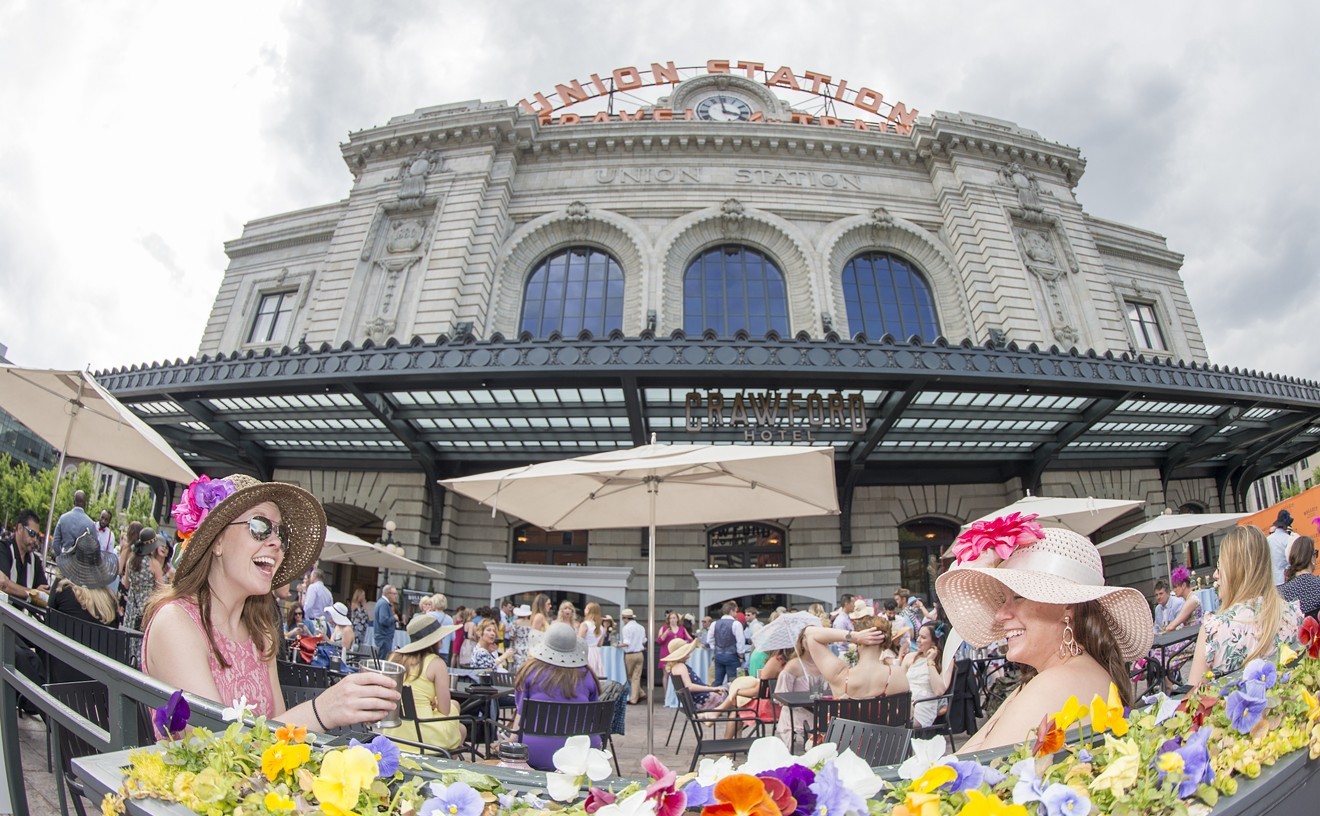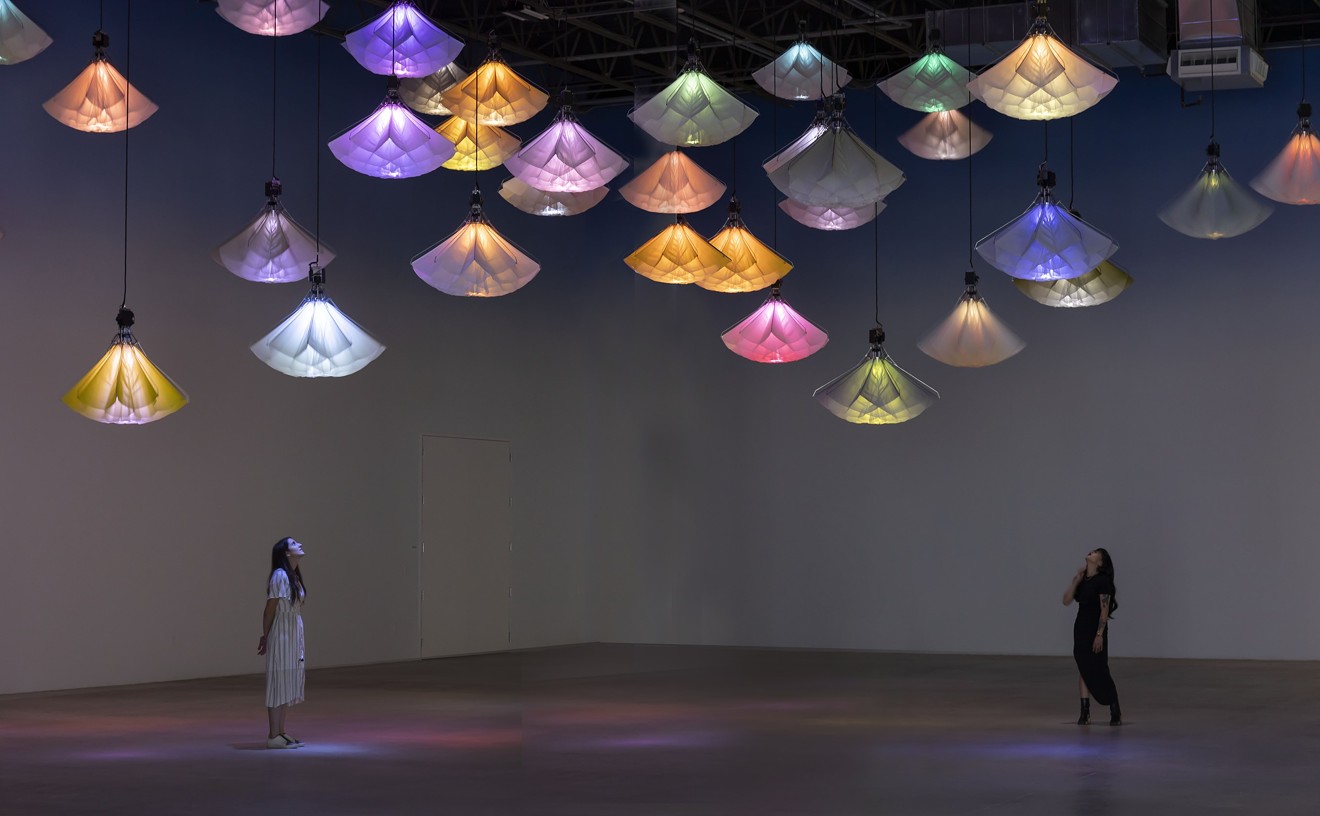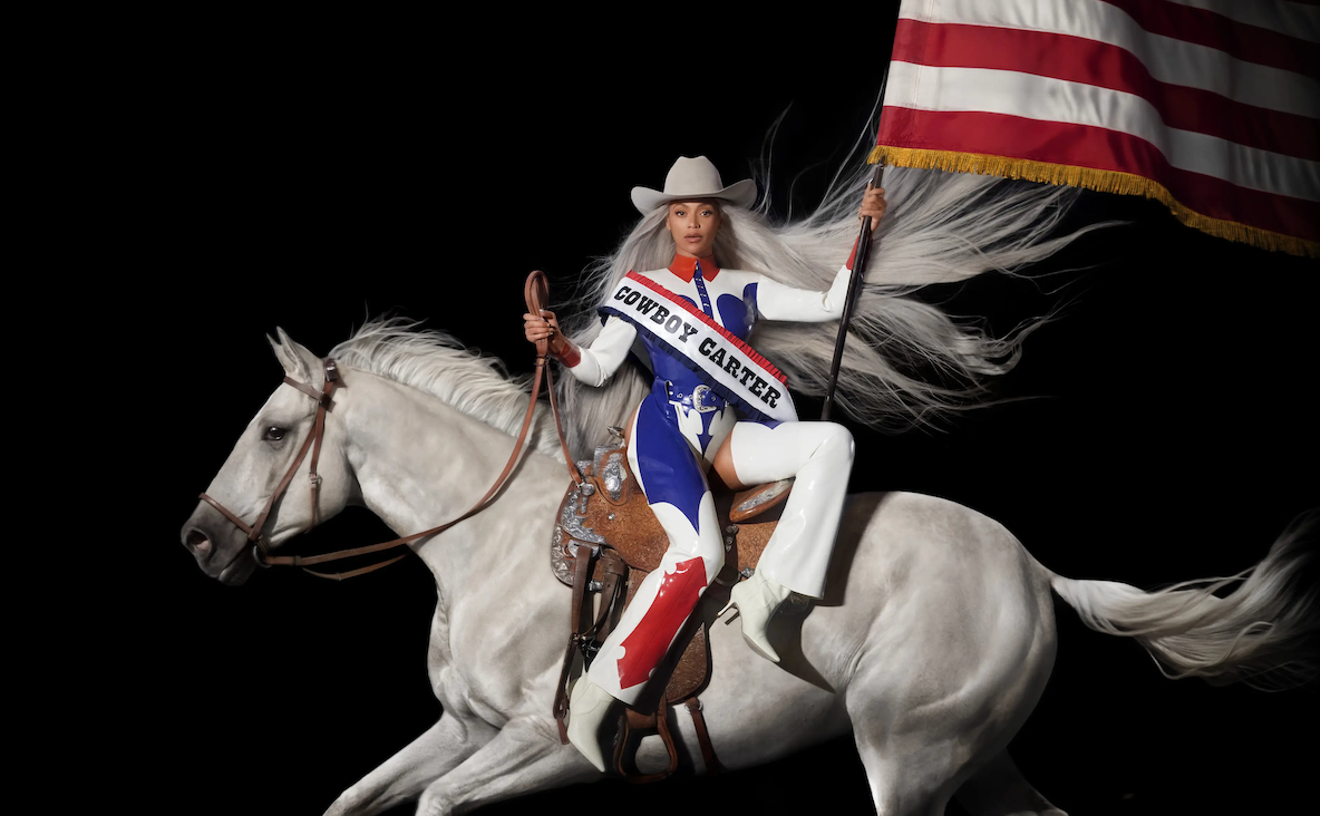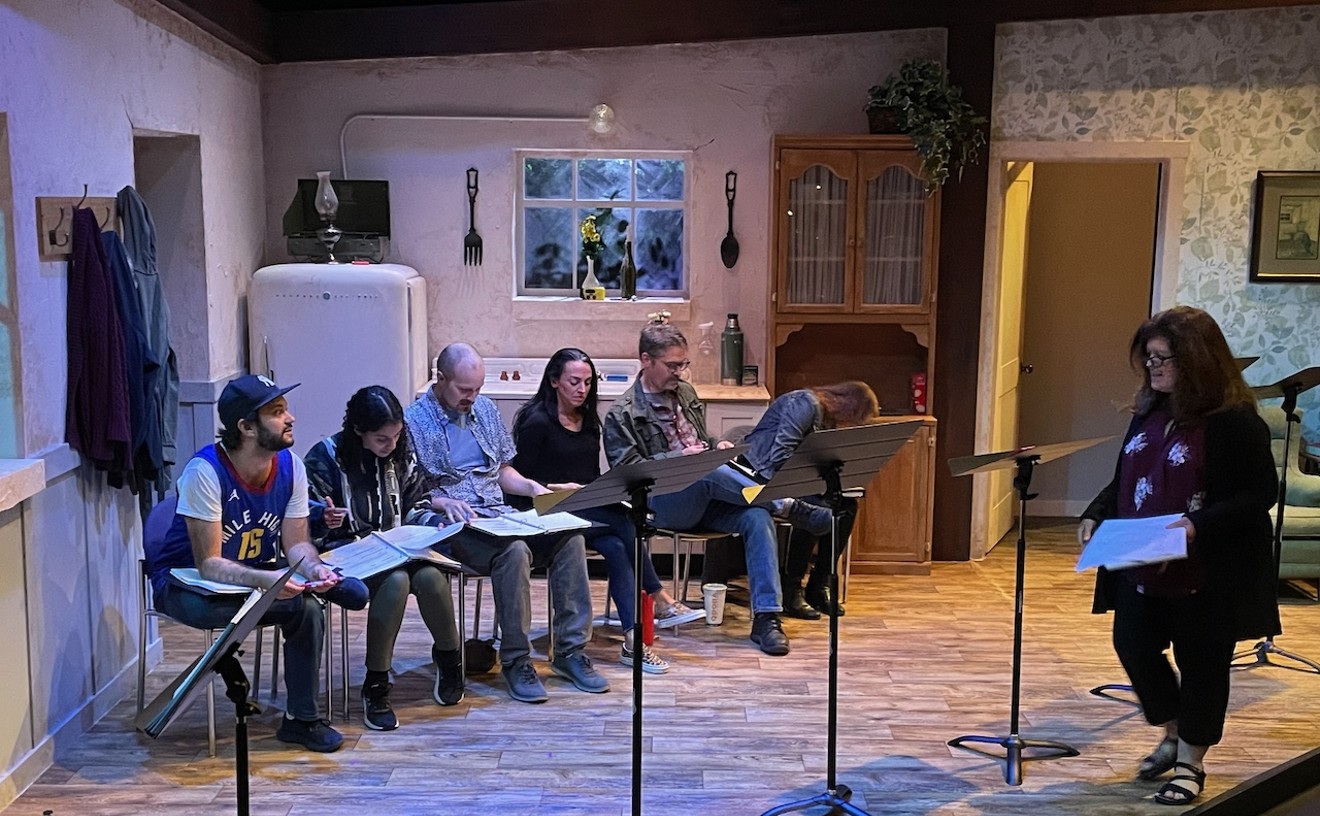From the moment it opened, four years ago this month, the Clyfford Still Museum has been one of the city’s greatest cultural treasures. Located inside a lovely little concrete building, the museum is dedicated to the conservation and presentation of the work of the legendary abstract-expressionist pioneer Clyfford Still, who, oddly enough, had no real connection to the Mile High City during his lifetime.
The CSM wound up being in Denver because Still, who died in 1980, had promised in his will that the treasure trove left behind in his studio would be given to any American city that would commit to constructing a museum solely dedicated to his work. In 2004, then-mayor John Hickenlooper accepted the challenge and agreed to build such a facility, which was then privately funded. The next year, 2005, another huge hoard of Stills was bequeathed to the not-yet-even-designed museum by Still’s widow, Patricia. All together, the CSM’s holdings today number more than 3,000 pieces.
Also in 2005, Dean Sobel was chosen as the venue’s founding director. Not only does he love Still’s work, but he knows it inside and out, and this familiarity has led to some inspired interpretations of the artist’s painting that fly in the face of established scholarship on the subject. Most notable in this regard is his discovery that Still’s early abstract-expressionist paintings do not refer to the landscape, as had formerly been thought, but rather emerged from the figural paintings that preceded them.
Perhaps Sobel’s greatest gift, however, is his talent for keeping the place fresh by finding interesting ways to look at Still. For the current, marvelous show — Repeat/Recreate: Clyfford Still’s “Replicas” — Sobel zeroed in on one of the artist’s many eccentricities: his interest in creating direct reinterpretations of his own work.
This subject — creating copies — also flies in the face of accepted expectations, not just about Still, but about abstract-expressionist painting generally, which is commonly seen as being the result of a unique interaction between the artist, the paint and the canvas. This show reveals, however, that for Still, abstraction was a studied practice — the product not of action, but of a contemplative process — and that it could be repeated.
Sobel says that showcasing Still’s doubles — and a trio, too — was one of his earliest ideas for a show when he took on the job as director. It required some time to pull off, though, as the various matching pairs had been separated and thrown to the four winds, winding up in collections around the world. Sobel credits co-curator David Anfam and assistant curator Bailey Harberg Placzek with tracking them down and bringing this research-intensive exhibit to fruition. The curatorial team was able to snag about half of Still’s extant replicas, which amount to more than 25 pairs.
After an introductory gallery that includes a group of self-portraits that don’t really illustrate the idea of re-creation, the show takes off in the second gallery, where the story of how Still reproduced paintings is told. From there, things progress in chronological order. A wonderful example is “Row of Elevators,” from 1928-1929, and its slightly later (1929) untitled companion. There are specific differences in the details, but basically the composition of grain elevators receding into the distance is shared by both. In the earlier version, the colors are richer, the forms more emphatic. The later one is lighter in tone and more atmospheric. While there’s nothing strange about an artist creating various versions of certain representational scenes, it is unusual to replicate abstracts. Still’s earliest abstractions are from the late 1930s, with “1937-No. 1/Study in Line” and its fraternal twin, “1937-No. 2,” exemplifying that. His idea of creating two nearly identical versions of the same non-representational composition — as in these paintings — is totally remarkable.
It’s in the third gallery, though, where we see how radical this process was. “1944-N-No. 1” and “1944-N-No. 2” are among the earliest abstract-expressionist paintings created by Still — or by anyone else — which is why it’s so surprising that the second one was even done. If you look at just one of them, the work appears to have been the product of instinct and automatism; the black ground is freely painted in each, and the lines and gashes of color look to have been done quickly, their contours subconsciously guided and partly the product of accident. But none of this can be true when you see the two paintings side by side. They were obviously carefully crafted so that “No. 2” replicates “No. 1,” with Still being able to summon the same sense for line and color more than once — even if there are subtle differences. So much for the idea that an abstract-expressionist painting is a precise record of the unique interaction of the artist with the medium of paint.
In the next few galleries are pairings of paintings that are close in both color and composition, such as the two versions of “1956-J.” In one set — “1951 B” and “1951 B-No. 2” — the colors are opposite to one another, and it’s not obvious that they are actually a pair, but they are.
Then there is a gallery that contains works on paper, with the same composition being used across different mediums, like an oil sketch paired with a drawing.
After a return to the topic of Still’s large paintings in the next space, the show climaxes with a gallery in which three nearly identical paintings, all of them mammoth in size, have been displayed together. These are “1951-T-No. 1”, “1951-T-No. 2” and “1951-T-No. 3.” Each is a magnificent example of Still at the peak of his painterly talent; the basic image that they share is fairly famous because “No. 3” has been owned by the Museum of Modern Art since it was completed. But seeing the three together, you notice that the one Still kept for himself, “No. 1,” is the best. As the artist himself noted, MoMA’s “No. 3” is clearly inferior to it, and to “No. 2.” Still was famous for his antipathy to museums, and he had a special resentment for MoMA over some imagined (or real) slight. Interestingly, there was a fourth version that had been exhibited in period, but Still destroyed it for some reason.
A couple of months ago, when the show first opened, I spoke with co-curator Anfam and asked him why these replicas were made. He explained that there were apparently an array of reasons. In some cases, it was to re-create a piece that had been sold but which Still wished to retain. In other cases, it appears that Still wanted to improve or refine the original with an additional take. In still others, it was to experiment with different scales and colors. Few, if any, of the pairs are related as a study would be to a finished work — a fairly common case of doubling in art — because as often as not, the sketchy one was done after, not before, the more polished version. Ultimately, though, Still’s motivation for copying himself remains unknown.
In addition to being a rare opportunity to see these pairs rejoined, this exhibit is yet another example of the seemingly limitless range of ideas that CSM director Sobel has brought to his assignment of showcasing Still’s career.
Repeat/Recreate, through January 10 at the Clyfford Still Museum, 1250 Bannock Street, 720-354-4880, clyffordstillmuseum.org.
[
{
"name": "Air - MediumRectangle - Inline Content - Mobile Display Size",
"component": "12017618",
"insertPoint": "2",
"requiredCountToDisplay": "2"
},{
"name": "Editor Picks",
"component": "17242653",
"insertPoint": "4",
"requiredCountToDisplay": "1"
},{
"name": "Inline Links",
"component": "18838239",
"insertPoint": "8th",
"startingPoint": 8,
"requiredCountToDisplay": "7",
"maxInsertions": 25
},{
"name": "Air - MediumRectangle - Combo - Inline Content",
"component": "17261320",
"insertPoint": "8th",
"startingPoint": 8,
"requiredCountToDisplay": "7",
"maxInsertions": 25
},{
"name": "Inline Links",
"component": "18838239",
"insertPoint": "8th",
"startingPoint": 12,
"requiredCountToDisplay": "11",
"maxInsertions": 25
},{
"name": "Air - Leaderboard Tower - Combo - Inline Content",
"component": "17261321",
"insertPoint": "8th",
"startingPoint": 12,
"requiredCountToDisplay": "11",
"maxInsertions": 25
}
]










